
The Jeff Bezos Secret to Success Worth Stealing
While there’s a long list of secrets rich people won’t tell you, the richest one of the them all is spilling one of his winning strategies.
Jeff Bezos, who recently dethroned Bill Gates as the richest man in the world, transformed e-commerce with the creation of Amazon.com in 1994. What started as an online bookstore is now the world’s largest online retailer, worth over $400 billion. That level of success doesn’t come without hard work, ingenuity, and lifetime of valuable lessons learned. (Find out the five little life skills that promise success, according to science.)
One of those lessons requires you to do a little bit of time travelling. During an interview at Summit’s LA17, Amazon’s founder and CEO said that when he came to a crossroads where he would have to make a potentially life-changing decision, he would put his mindset “forward to age 80.” This mental exercise ensured that he would make a decision with the minimal amount of future regret. Basing his decisions on what he would regret the least made the right choice clear to him, he revealed. (You’ll never guess what Amazon was almost called.)
There you have it: Fast forward your life a bit, and you’ll feel better about your choices. Now, you’ll be ready to create your own success story.
Plus: 9 Billionaires Share Their Definition of Success

1. Walking
There are plenty of health benefits to be gained from walking, even if you’re not quite reaching the common goal of 10,000 steps a day. Studies have shown that walking actually bolsters your defences against the negative effects of stress. When it comes down to it, any exercise that gets you outside should help relieve holiday stress and boost your mood.
2. Running
If you feel like kicking your holiday exercise regimen up a notch, a winter run can be an even better option. A study published in the Journal of Neuroscience found that running effectively rewires your brain, promoting the building of new neural pathways that can help you become more resilient to stress. What’s more, the huge rush of endorphins can lead to the amazing “runner’s high” that pavement-pounders are always talking about!
3. Swimming
Swimming is an awesome exercise option for people who are independent and treasure their alone time. A study published in Procedia—Social & Behavioral Sciences found that adults who swam three times a week were better able to manage stress. (That’s not to mention the soothing effect of soaking in that lovely warm water!)
4. Yoga
Between the relaxing stretches and mindful breathing, yoga is a fantastic way to relieve holiday stress. A study of young adults found that people who participated in yoga reported feeling significantly less anxious, tense, depressed, angry and fatigued afterward. If you’re really feeling adventurous, turn up the heat: hot yoga classes are a great way of banishing winter’s chill!
5. Weight lifting
Feeling anxious and overwhelmed by holiday stress? Grab a pair of dumbbells. By putting heavy strain on your muscles, resistance training can actually produce even more endorphins than cardio in a shorter amount of time. Weight lifting has also been clinically shown to reduce stress and anxiety.
For more on why you should make time for physical activity during the holidays, check out ParticipAction!

You probably remember a few times in your life when your parents sat you down for a serious conversation. And while those conversations may have been tough to sit through—and sometimes awkward!—you now realize how important they were. The time may have come for you to have another difficult conversation with your parents, this time about their wishes for their final arrangements.
Perhaps there’s been an event—a death in the family, for example—that got you thinking about your parents’ mortality. “Often times, it is illness or the loss of someone close that prompts others to have the discussion,” says Shannon Burberry, funeral director at Forest Lawn Funeral Home & Cemetery in London, Ontario. But you don’t have to wait until a major life event to have an open discussion with your parents about their end-of-life wishes.
Here, Burberry suggests some ways to make “the talk” go smoothly.
Don’t put off the conversation
Speaking to your parents about their final arrangements is one of the most difficult conversations you’ll have. But however challenging, it’s an important discussion that shouldn’t be put off.
According to Burberry, any time is a good time to have the talk. “Death is a part of our life cycle and discussing it openly and honestly as you would a birth, marriage or retirement is important,” she says. “Some people feel the discussion is less difficult when you are in good health, however we never know when our situation may change or tragedy could occur.” So you don’t want to rush the talk, but you also don’t want to wait until it’s too late.
Ease into the conversation
Don’t worry about finding the perfect location: “It is my belief that if the conversation is to arise, the setting doesn’t matter,” says Burberry. To ease into the talk, she suggests saying something along the lines of ‘I was reading an interesting article the other day about end-of-life planning. Have you thought about your own wishes?’
The subject is tricky, so don’t get discouraged if it takes a few tries to really get the conversation going.
Keep it light and speak from the heart
When speaking of taboo subjects, having a sense of humour can help put people at ease. In Burberry’s experience, humour is a tool that’s often used to start the discussion. Being open and sincere are also important: “Speaking from the heart and being honest will help to alleviate awkwardness,” says Burberry, who adds that people will pay more attention when they know it’s a conversation that matters to you. “Talking about your initial feelings are best, as it helps to eliminate some of the fear and stigma,” she says.
Document the conversation
Pre-planning final arrangements as a family will minimize ambiguity as to your parents’ wishes. It will also clarify the role that you and other family members can play in honouring your loved ones in the way they want to be remembered.
Not all family members will be present when decisions are being made, which is why you should always document these types of conversations. This way, your parents’ decisions will be clear and concise to everyone. This eases the stress on family members about having to agree on these important decisions. “Everyone is clear on what the wishes are and can find a meaningful role in the process,” says Burberry.
If you’re ready to have “the talk” with your parents, Arbor Memorial can provide you with guidance on having a respectful and meaningful conversation. For more information, go to arbormemorial.ca.
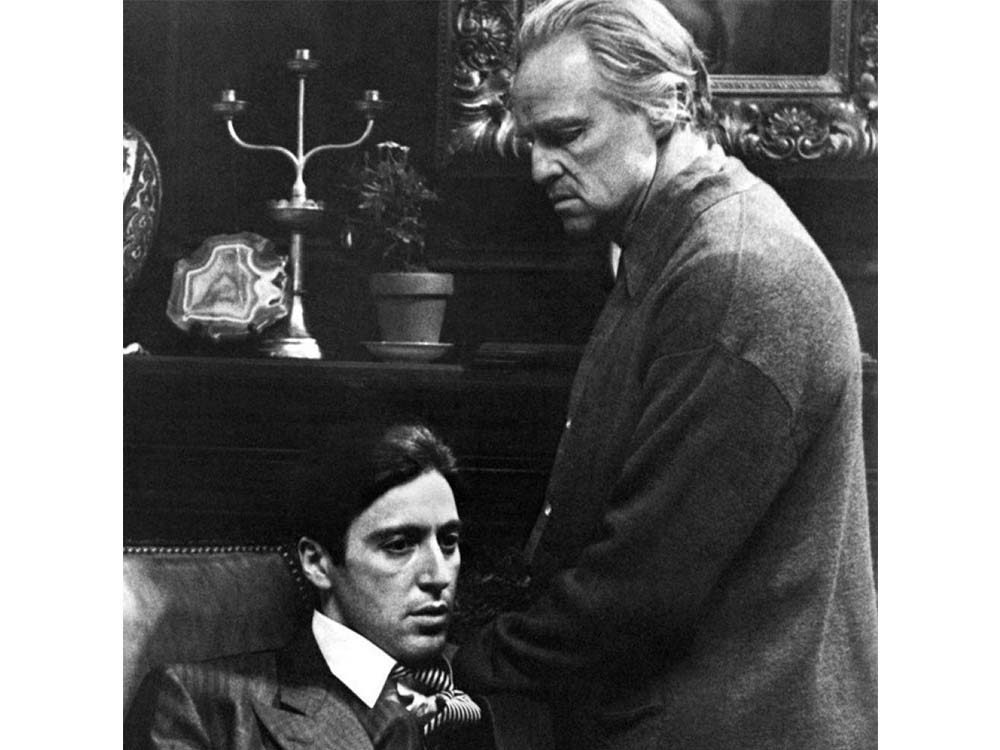
1. Marlon Brando Used Cue Cards
Brando insisted that reading his lines during the take increased his spontaneity and made his lines sound less canned. “If you have a general idea of what the words are, then you look at the card and it gives the feeling to viewer that the person is really searching for what he is going to say,” Brando said in the documentary The Making of Superman: The Movie. Brando began using the cards as early as 1966; directors taped cards to lamps, bushes, and even on other actors to keep them from showing up in the shot. (Here are nine of the best fashion films.)
2. One of the movie’s most famous lines was improvised
If you don’t know anything about The Godfather, you probably recognize the line, “Leave the gun. Take the cannoli,” uttered by capo Peter Clemenza after a certain dirty deed. Actor Richard Castellano improvised that line after director Francis Ford Coppola added a line in an earlier scene in which Clemenza’s wife says, “Don’t forget the cannoli!”
3. The horse’s head was real…
…as were actor John Marley’s screams. A fake horse head was used in rehearsals, but when the cameras were actually rolling, Coppola replaced it with the real thing, much to Marley’s surprise. (These true crime movies will chill you to the bone.)
4. The words “mafia” and “mob” aren’t uttered in the movie
After a meeting with the Italian-American Civil Rights League, an organization formed to combat the use of stereotypes about that group, Coppola agreed to omit the words from the script (though they didn’t appear much anyway). The closest it gets is the newspaper headline, “Mobster Barzini Questioned in Underworld Feud” the day after Michael’s killing spree in the Italian restaurant. (These movies feature the most popular tunes ever.)
5. One of the movie’s most memorable scenes was a mistake
Former pro wrestler Lenny Montana, who played Luca Brasi, was so nervous to act with Marlon Brando that he couldn’t muster a good take of the scene in the Godfather’s study on the day of his daughter’s wedding, despite a full day of shooting. Coppola didn’t have time to reshoot the scene, so he incorporated Montana’s best attempt in the movie. The result is a revealing look at the softer side of a merciless killer.
6. Sofia Coppola is in all three Godfather movies
Francis Ford Coppola’s daughter Sofia appears as the baby in the baptism scene in The Godfather, as an immigrant girl on the ship that brings Vito Corleone to Ellis Island in The Godfather II, and, of course, as Michael Corleone’s daughter in The Godfather III (a role she got after actress Winona Ryder dropped out).
7. Brando turned down his Best Actor Oscar
When Roger Moore called Brando’s name for Best Actor on the evening of March 5, 1973, a diminutive, long-haired woman in Apache dress approached the stage. The woman, Sacheen Littlefeather, waved away the Academy Award statue and read from a statement: “I’m representing Marlon Brando this evening and he has asked me to say that he cannot accept this very generous award because of the treatment of American Indians today by the film industry.” Brando had long had a political streak, and often voiced his support for the formation of a Jewish state, for African-American rights, and for the Black Panther Party. Marlon Brando became the second person to decline the Academy Award for Best Actor (the first was George C. Scott for the award he won for Patton).
8. Brando didn’t stuff his mouth with cotton for the movie
He did it for the screen test in order to make Vito Corleone “look like a bulldog.” For the filming of the movie, he had a dentist make him a custom mouthpiece to create his sagging jowls.
9. “Don” doesn’t mean what you think it means
The bossess of each of the Five Families in The Godfather are referred to with the title Don (Don Corleone, Don Branzini, Don Cuneo, etc.) and treated like nobility. But the actual meaning of “don” in Italian is closer to “respected uncle,” than “murderous crime boss.” According to Coppola, Mario Puzo, the author of The Godfather books, simply made up the usage—and it stuck.
10. Lots of famous actors failed to be cast in the film
Warren Beatty, Dustin Hoffman, Jack Nicholson, and Robert DeNiro all wanted to play the part of Michael in the film. As for Al Pacino, who received a nomination for Best Supporting Actor for the role, he didn’t want it. “I thought, ‘how am I going to play this part?'” Pacino told Loaded magazine. “No one wanted me. Except for Coppola.”
These films were the biggest box-office hits of the year, from 1933 to present.
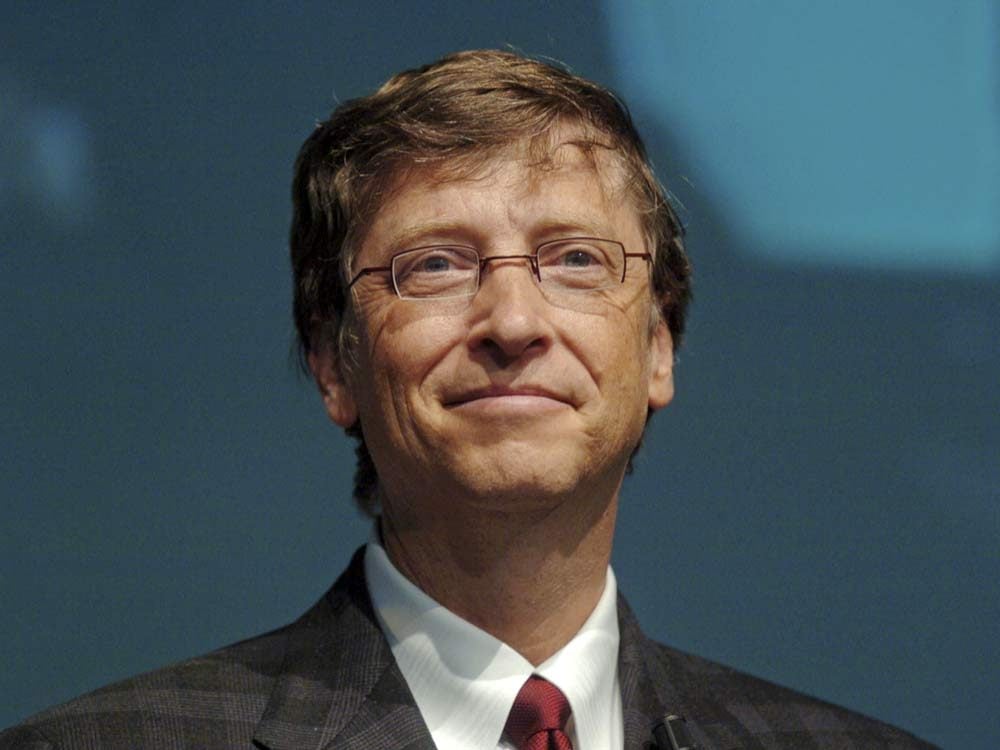
These Are Bill Gates’ 4 Rules of Reading
Books aren’t just for the bookish anymore. The computer has proven to be the biggest innovation since the printing press for making the written word accessible to just about anyone. Finding something to read may not be difficult, but making the most of your reading time can be more complicated.
Fortunately, advice has arrived from Microsoft founder Bill Gates. The famous humanitarian and entrepreneur sat down for an interview with Quartz and dove into his four hard-and-fast rules when it comes to reading. You’ll want to take note of these—after all, science says that a healthy reading habit can help you live longer. Gates’ rules, in short:
- Use the margins for note-taking: “Particularly if it’s a nonfiction book, are you taking in new knowledge and sort of attaching [it] to knowledge you have? For me, taking notes helps make sure that I’m really thinking hard about what’s in there.”
- Finish everything that you start: “[Infinite Jest] is quite long and complicated and I don’t want to make an exception. It’s my rule to get to the end.” For the record, Infinite Jest is 1,069 pages long! (Only bookworms will understand these 12 things.)
- Pick a medium that you’re comfortable with—print or digital (Gates prefers print): “Over time I will make the switch [to digital]…[print] I’m used to that and it’s ridiculous, I have this whole book bag that goes on trips with me and it’s voluminous and antiquated.”
- Designate an hour for your reading: “You’d want to be sitting down for an hour at a time because otherwise just getting your mind around [the work, and say] ‘OK, what was I reading?’ It’s not the kind of thing you can do five minutes here, 10 minutes there.”
If you want to have an ideal reading experience, take it from the billionaire. Don’t know where to start? Check out these list of books you really should have read by now.
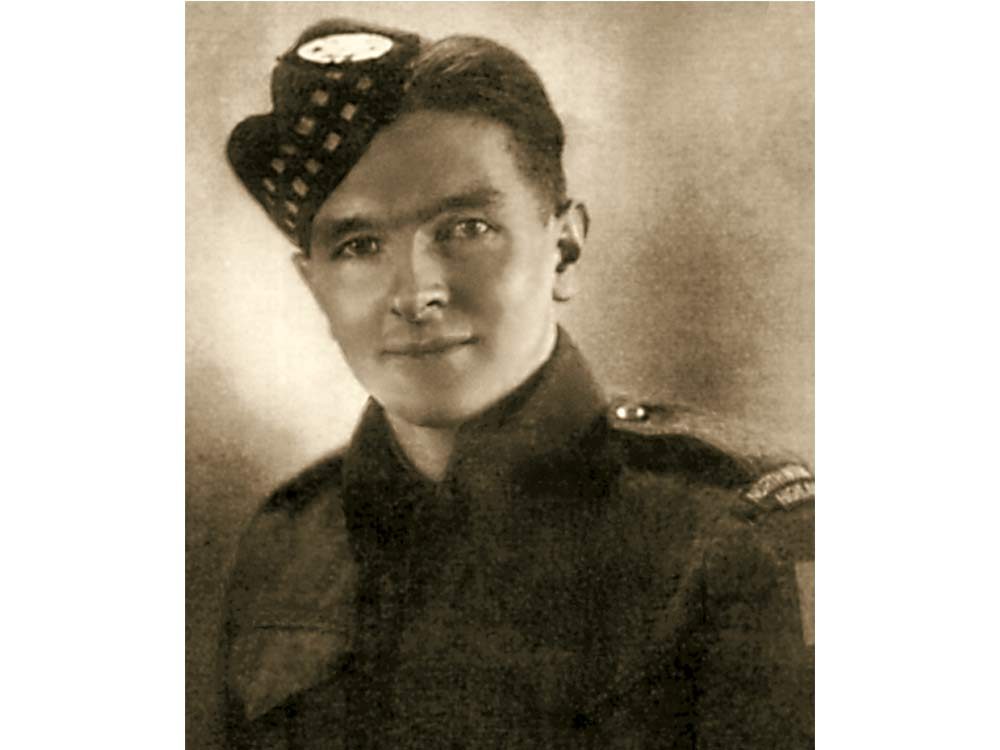
Veteran Profile: Earl Jewers
Earl was born in Liscombe Mills, N.S., in 1922. He landed on the “Nan White” sector of Juno Beach on June 6, 1944, with the North Nova Scotia Highlanders. He was an HQ Company radioman/signalman. He still resides in Nova Scotia.
“We got up to an anti-tank ditch very close to Authie, where the fighting was very heavy ahead of us and around us, and the orders came to us to destroy our weapons, (then) it was everybody for himself. It was kind of chaos, because everybody who was still alive was running through the fields. We had 80 dead that night. You’re not just a battalion of soldiers; you were a family of soldiers, as the saying goes. We still are, the few that’s left.”
For more profiles by Veterans Voices of Canada, click here.

How to Pronounce Canada’s Most Tongue-Twisting Hockey Player Names in 5 Minutes (or Less)
You don’t have to be new to the good old hockey game to find yourself tongue-tied naming off some of the rising stars of Canada’s NHL teams. To help us all keep up to date with the hockey chatter—and decode those watercooler conversations—the experts at language learning app Babbel have created this handy guide to pronouncing 15 of the most challenging hockey player names from Canada’s NHL teams.
Aleš Hemský (Czech Republic) – Montreal Canadiens – (al-esh hem-skee)
Byron Froese (Canada) – Montreal Canadiens – (buy-run fraze)
Dmitry Kulikov (Russia) – Winnipeg Jets – (de-me-tree kool-yih-kov)
Eemeli Rasanen (Finland) – Toronto Maple Leafs – (ey-meh-li ras-sah-nen)
Elias Pettersson (Sweden) – Vancouver Canucks – (eh-lee-us peh-tur-shon)
Erik Burgdoerfer (USA) – Ottawa Senators – (air-rik burg-door-fur)
Jonah Gadjovich (Canada) – Vancouver Canucks – (yo-nuh gad-yo-vitsh)
Jussi Jokinen (Finland) – Edmonton Oilers – (yew-see yo-kee-nen)
Karl Alzner (Canada) – Montreal Canadiens – (karl alz-nur)
Matt Taormina (USA) – Montreal Canadiens – (mat ta-or-mee-na)
Michael Sgarbossa (Canada) – Winnipeg Jets – (my-kuhl sgar-bo-sa)
Patrick Wiercioch (Canada) – Vancouver Canucks – (pat-rik weer-kosh)
Timothy Liljegren (Sweden) – Toronto Maple Leafs – (tee-mo-thee lil-ye-gren)
Ty Rattie (Canada) – Edmonton Oilers – (tie ra-tee)
Yohann Auvitu (France) – Edmonton Oilers – (yo-han oh-vee-too)
Want to learn more sports lingo in your favourite languages? Try learning with Babbel!
Check out the Ultimate Guide to Canadian Hockey Slang!
This Is the Job Kate Middleton Had Before Royal Life
It’s no secret that the Duchess of Cambridge is our go-to girl for all things royal. Not only does she look dashing on the arm of her husband, Prince William, but she can also stand strong on her own, representing the royal family at sanctioned events. (But this is why the royal couple never show PDA.)
Although her designer dresses and flawlessly gorgeous hair might suggest otherwise, Kate was once just an average person who had to make a living. But even royal enthusiasts are a bit fuzzy on what, exactly, she pursued as a career. (Prince William and Kate always break this royal rule.)
Here’s the scoop: The Duchess completed a History of Art degree at St. Andrew’s College—where she met Prince William—in 2005, according to the couple’s official website. After graduating, Kate briefly worked for Party Pieces, a party goods supplier owned by her parents. Her responsibilities there included catalog design and production, marketing, and photography. She also spearheaded a junior brand called “First Birthdays” for the company.
One year later, Kate landed a job as a part-time accessories buyer for a London-based clothing store called Jigsaw Junior. According to the company’s former owner, Belle Robinson, Kate never flaunted her status—despite constant bombardment by press and paparazzi regarding her relationship with Prince William. (This is how much each person in the royal family is worth.)
“She sat in the kitchen at lunchtime and chatted with everyone from the van drivers to the account girls,” Robinson told the Evening Standard.
The Duchess was reportedly considering a career in photography at the time, too. But that likely got put on hold when, in November 2010, William and Kate announced their engagement to the world. Although Kate revealed that joining the royal family was “nerve-wracking,” she jumped into her new “job” with gusto. (These eight words are banned from the royal family’s vocabulary.)
Now, between her duties as a British royal and a mother to two (and now three!) precious youngsters, the Duchess probably has her hands full. (Everyone in the royal family must follow these etiquette rules.)
Check out Kate Middleton’s message for everyone who struggles with their mental health.
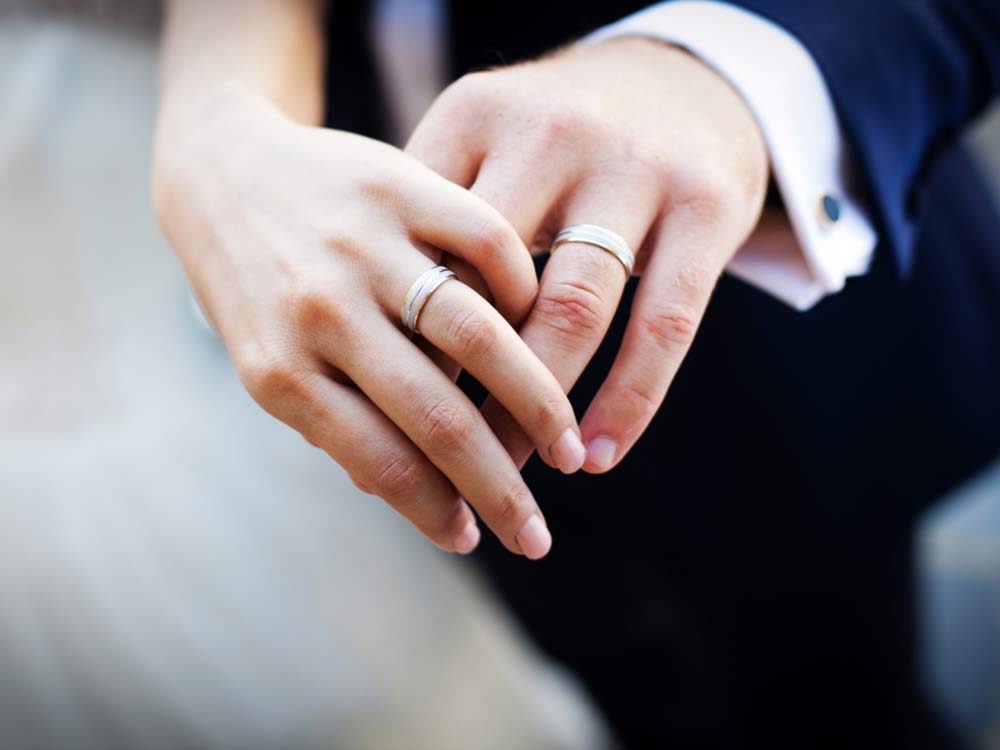
Why We Wear Wedding Bands on the Ring Finger
See someone wearing a ring on their right index finger and you can bet they’re not married. A ring on the left ring finger, though, means that person is taken. Seems arbitrary, but there’s actually historical reason it became known as the “ring finger,” and why most people wear their wedding band on the left. (Here are 10 breathtaking wedding destinations to pin to your Pinterest board.)
The wedding ring tradition dates back to ancient Egypt, as archaeologists have found evidence in hieroglyphics that brides would wear a ring, according to the BBC. The Egyptians who first started wearing wedding bands as a symbol of eternity believed there was a “delicate nerve” that ran from the fourth finger all the way to the heart, according to Mental Floss. Of course, we know now that the heart is an organ for pumping blood, but back then it was thought to be the centre of our emotions. (While some etiquette rules have gone out the window, there are still some you must follow at every wedding.)
Egyptians weren’t the only ones giving rings away, though. Ancient Greeks and ancient Romans also slipped wedding rings on their left ring fingers for a similar reason. They believed a vena amoris—Latin for “vein of love”—ran from that finger to the heart, according to Snopes. (Find out the history behind these five common superstitions.)
Even though that vein and nerve don’t exist, Western countries have continued that ancient tradition. In other cultures, such as in Denmark, Poland, and Cuba, though, wedding rings go on the right hand. (Check out these other cool wedding traditions from around the world.)
Traditionally, women were the only ones to wear wedding rings. Men didn’t join in until World War II, when husbands wanted something to remind them of their wives and kids. (An etiquette expert explains how to recover from six cringe-worthy wedding guest fails.)
Learn the terrifying reason we have bridesmaids and groomsmen at weddings.
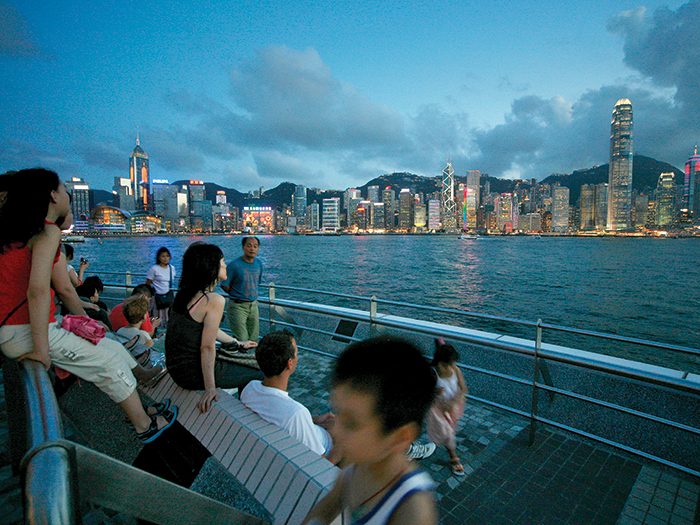
Victoria Harbor is breathtaking, especially during the nightly laser show, when the pleasure junks, ferries and container ships seem to dance in the lights. On this warm April night, my husband, Jules, and I are standing at the rail of a rooftop restaurant on Hong Kong Island, in awe at the spectacular skyline. Brightly lit skyscrapers—some 1,300 of which are over 100 meters, by far the most of any city in the world—spike the night sky around us and across the teeming harbor on Kowloon peninsula.
As the breeze shifts our hair, we feel Hong Kong’s energy. In the distance twinkle the lights of Tsing Ma suspension bridge, the world’s longest for cars and trains, whisking people toward the modern 20-year-old airport on Lantau Island. Beyond it is a nearly completed multi-billion dollar bridge linking Hong Kong to Zhuhai in mainland China and the gambling haven of Macau.
It feels good to be back. Jules and I lived here in the 1990s, before Britain relinquished Hong Kong to China in 1997. Now, 20 years later, we’ve returned for 10 days to see how the city has fared. It’s also our 20th wedding anniversary. Where better to celebrate it than in the city where we met?
Next morning, we leave our Causeway Bay hotel and walk toward Wan Chai, a district two kilometers away. Walking is the best way to experience Hong Kong’s colorful sights, sounds and smells. First we must negotiate throngs of Saturday shoppers here in this retail mecca.
We join the sea of people in a wide pedestrian crossing on Yee Wo Street that leads us past one of the city’s largest department stores, Sogo, swathed in posters advertising designer labels. Young women sporting sleek heels and luxury handbags—a couple of them with beribboned apricot poodles tucked under an arm—are a common sight this morning.
By the time we reach Wan Chai, we’ve left the brand shoppers behind. This district is grittier than Causeway Bay, although its former reputation for girly bars has somewhat given way to shiny office towers. At Bowrington Road market, which spans a couple of blocks, housewives are haggling loudly over meat, fish and vegetables.
Street markets are a must-see in Hong Kong, but be prepared for the smells—meat, seafood, infamously stinky durian fruit—and a little gore: I watch a vendor prove to a customer how fresh his fish is by slicing along one side, folding the fillet back and exposing the still-intact beating heart.
Nearby, beneath an overpass, we encounter a curious sight: an elderly woman chanting while she beats a paper with a shoe. A customer has written on the paper the name of a person who has upset him, we learn. Afterward, the paper is rubbed with pork fat and burned. This ritual beats the “villain” out of the customer’s life.
“Only in Hong Kong,” Jules says, laughing.
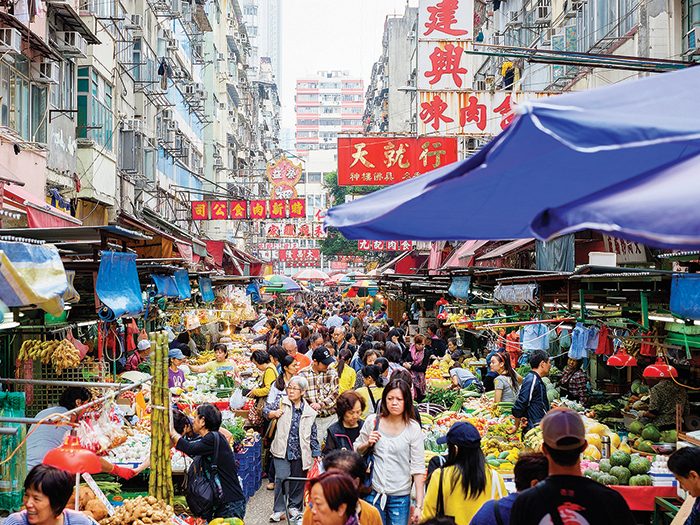
Later we stop to check out the wares of a gray-haired woman hanging men’s shirts on the metal grill of an office building. As Jules peruses the shirts, I ask her, “Do you feel Hong Kong has changed under Chinese rule?” She’s dismissive. “I’m just part of the little people,” she says. “I only want to make enough money. I don’t care if Britain or China is here.”
Other entrepreneurs we encounter seem to agree it’s business as usual. Before the handover, many people here feared Communist China would curtail the capitalism and human rights protections Hong Kong enjoyed under British rule, even though China promised self-rule—“one country, two systems”—for 50 years. But, as Christine Loh, a legislator here before and after the handover, expressed in an email to me, “The degree of freedom in Hong Kong on a day-to-day basis remains very high.”
We’ll hear a similar opinion over a lunch of dim sum—a local Cantonese specialty—in Kowloon, where we’re heading now on the Star Ferry. It’s been chugging across Victoria Harbor since 1888. The trip costs HK$2.70 (29 euro cents), a bargain in a pricey city. It’s a short walk to Serenade Chinese Restaurant; it’s vast, with huge windows overlooking the harbor.
There we meet my longtime friend Junko Watanabe. With her are Ronnie and Jennifer Ho, retired teachers in their late 50s who have just moved back from Boston to their home city after 23 years. Over bamboo baskets of har gau (steamed shrimp) and siu mai (pork dumplings) and an order of yi mein (egg noodles, fried), Ronnie and Jennifer tell us they’re delighted to be home. “We haven’t noticed many changes in daily life,” Ronnie says.
Their parents had fled poverty in China for colonial Hong Kong at a young age. Ronnie’s father encouraged the couple to emigrate before 1997. “Our parents knew China was to be feared,” says Jennifer. The 1989 Tiananmen Square massacre influenced their decision to leave.
They returned to Hong Kong to be back among family. Says Ronnie, “We’re too old to worry about politics now.”
Clearly, Hong Kong is thriving. In a recent survey of the world’s cities by human resources consulting firm Mercer, it ranked sixth for infrastructure, which includes such criteria as drinking water and public transit. It ranked 71st among 231 cities for quality of life—higher than the 11 other Chinese cities included.
The outlook for press freedom is less encouraging: a Reporters Without Borders (RWB) survey shows Hong Kong has slipped from 18th in 2002 to 73rd today (China ranked 176th.) RWB cites growing difficulty in covering sensitive stories about Hong Kong’s government and mainland China, and finds “extremely disturbing” the purchase of Hong Kong media by Chinese companies such as Internet giant Alibaba.
Politically, Hong Kong residents use their right to protest when they perceive China to be overreaching. In late 2014, thousands took to the streets in a protest dubbed the Umbrella Movement when Beijing insisted on vetting candidates for chief executive. China got its way.
Another trigger for protests has been tourism from mainland China. Before 1997 most visitors came from Japan and Taiwan, but when Beijing relaxed its rules in the early 2000s, the number of mainland visitors jumped from about seven million per year in 2002 to a whopping 43 million by 2016.
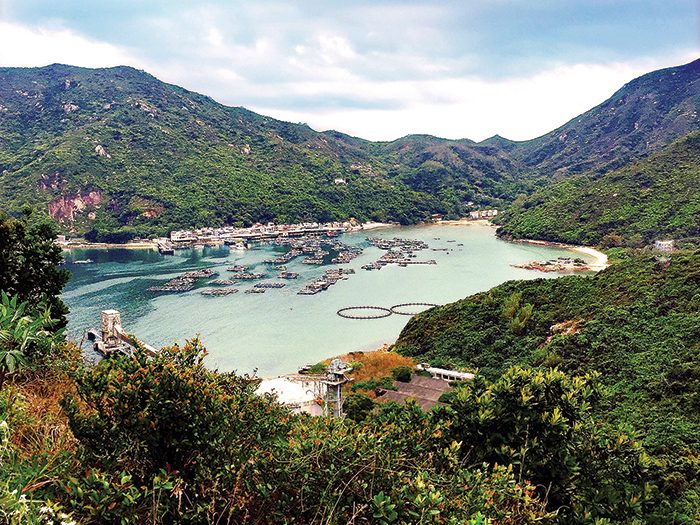
For some locals, that’s too many; they say the visitors are rude and loud. And they blame mainlanders for the scarcity of such necessities as baby formula and medicines.
Indeed, when Jules went to buy shaving cream, he was mystified to see drugstore staff unloading countless boxes of baby formula onto shelves. Mainlanders snap it up due to tainted baby formula scares in China. At a 2014 protest in Hong Kong, mainlanders were denounced as “locusts” eating the city’s resources. Signs read, “Go Back to China” and “Reclaim Hong Kong.”
Late one afternoon I meet up with Mark Sharp, a South China Morning Post editor and writer since before the handover, in the seaside town of Sai Kung, in the New Territories—the mostly rural region between Kowloon and mainland China. Over a beer ironically named Gweilo, a rude Cantonese term for “white person,” he confirms locals are more outspoken nowadays. “People worry that as more mainland Chinese come, Hong Kong will lose its identity.”
Young people, Sharp says, are especially vocal. They are Hong Kongers first: A recent Hong Kong University survey showed that only 3 percent of people aged 18-29 identify as Chinese, an all-time low since the surveys started in 1997; back then, that number was 17 percent.
Joshua Wong, 20, is the face of the generation that has known Hong Kong only as part of China. At age 14, he led a successful student protest against mandated “national education” courses. In his opinion, the courses were intended to create loyalty to the Communist regime. “We think that reduces freedom of thought,” says Wong.
As leaders of the 2014 Umbrella Movement, Wong and two others were jailed last August for six to eight months for their roles.
On a sunny morning, we hop onto a ferry bound for Lamma Island. It’s a 30-minute trip to Yung Shue Wan village—and a world away. Although Hong Kong isn’t often associated with green spaces, there are many, and Lamma, where we lived, has some of our favorite hikes. We drop our bags at our guesthouse and walk for two hours on paths that wind down toward sandy beaches and steeply upward again.
At a hilltop pavilion, we buy refreshing pineapple slices from an old woman in a straw hat. From a nearby path we can see the fishing boats and stilted seafood restaurants of Sok Kwu Wan village below. Walking back, we spot graves set into green slopes that face the sea for favorable fung shui. They are tidy. During the Ching Ming Festival two weeks earlier, families had swept loved ones’ gravesites and burned incense for departed spirits.
In Yung Shue Wan, we head to Andy’s Seafood Restaurant on Main Street and find a table with a view of the sun setting over the sea. It’s a slice of Hong Kong heaven to dine on grouper with soy sauce and ginger, and razor clams in black bean sauce.
Back on Hong Kong island, we walk from the pier into Central and Sheung Wan. The walk is a few minutes longer than in the 1990s; the shoreline has shifted to accommodate new skyscrapers. One thing hasn’t changed: most high-rises under construction are clad in traditional scaffolding of bamboo tied with nylon strips.
We browse antique stores along Hollywood Road and Cat Street, looking for an anniversary gift to each other. The symbol for the 20th year is, fittingly, china, and we find the perfect thing: a gold-painted teapot with wicker handles, featuring the Chinese character for double-happiness, a wedding symbol. “It’s HK$150,” the shopkeeper says, about 16 euros. I offer her HK$120 in cash; it’s a deal.
The wrapped treasure tucked under Jules’ arm, we pass galleries and, surprisingly, coffee shops with a hipster vibe: Winston’s, The Cupping Room, Cafe Deadend. When I lived here, tea shops were ubiquitous. Stores selling olive oils, vinegars, cheeses and wines also exemplify changing tastes; before 1997, we had to search those things out.
This evolution contrasts with Man Mo Temple, a Taoist and Buddhist temple dedicated to the gods of literature (Man) and war (Mo). Built in 1847, its sloping roof is decorated with carvings of dragons and human figures. The quiet, candlelit interior is scented with burning incense coils hanging from the ceiling. We watch worshippers set oranges and candles on a table, offerings to statues of the gods placed there.
Soon we rejoin the bustle of Hollywood Road.

It’s humid on our final day, and threatening rain. We have time for a last lunch. In Sheung Wan, past the pungently-scented dried-seafood stalls this district is famous for, we find a noodle house on Des Voeux Road. It’s full of chattering office workers. At the front window, the chef is dropping fresh noodles into a huge pot of steaming broth.
“Sorry, no English,” says the waitress as she drops two Chinese-language menus on the table. No problem; we point to bowls of noodles the chef has topped with barbecued pork and Chinese broccoli and hold up two fingers, then sip on tall glasses of sweet iced lemon tea while we wait. We copy the locals: stab at the lemon slices with a long spoon to squeeze out the juice, stir, sip, repeat.
On the street, it’s raining. We sprint to our hotel, grab our luggage and hail a cab. “Central Station, please, Airport Express,” I tell the driver, a man in his 60s. “Oh, you go home?” he asks. He says he loves showing visitors around.
As we weave through buses, trams and luxury cars, I point out to Jules an elderly man wearing a pointed straw hat riding a rusting bicycle. Tall propane tanks are strapped to either side, and he’s negotiating traffic through the rain. Only in Hong Kong.
At the station, the driver points to where we can check our bags to the airport. “Make sure, come back soon!” he says, waving. “This is world’s best city!” I couldn’t agree more.
Travel Tips
Lodging IBIS Hotel, Sheung Wan, from 85 euros, ibis.com; The Langham, Tsim Sha Tsui, from 190 euros, langhamhotels.com
Dining Dim sum at Serenade Chinese Restaurant, Tsim Sha Tsui, and Maxim’s Palace at City Hall, Central, from 2.50 euros/basket; Seventh Son, Wan Chai, Cantonese dishes Crispy Chicken, Baked Stuffed Crab Shell, 21 euros each; Tin Lung Heen, Ritz Carlton, Yau Ma Tei, Iberian barbecued pork with honey, 34 euros
Information www.discoverhongkong.com